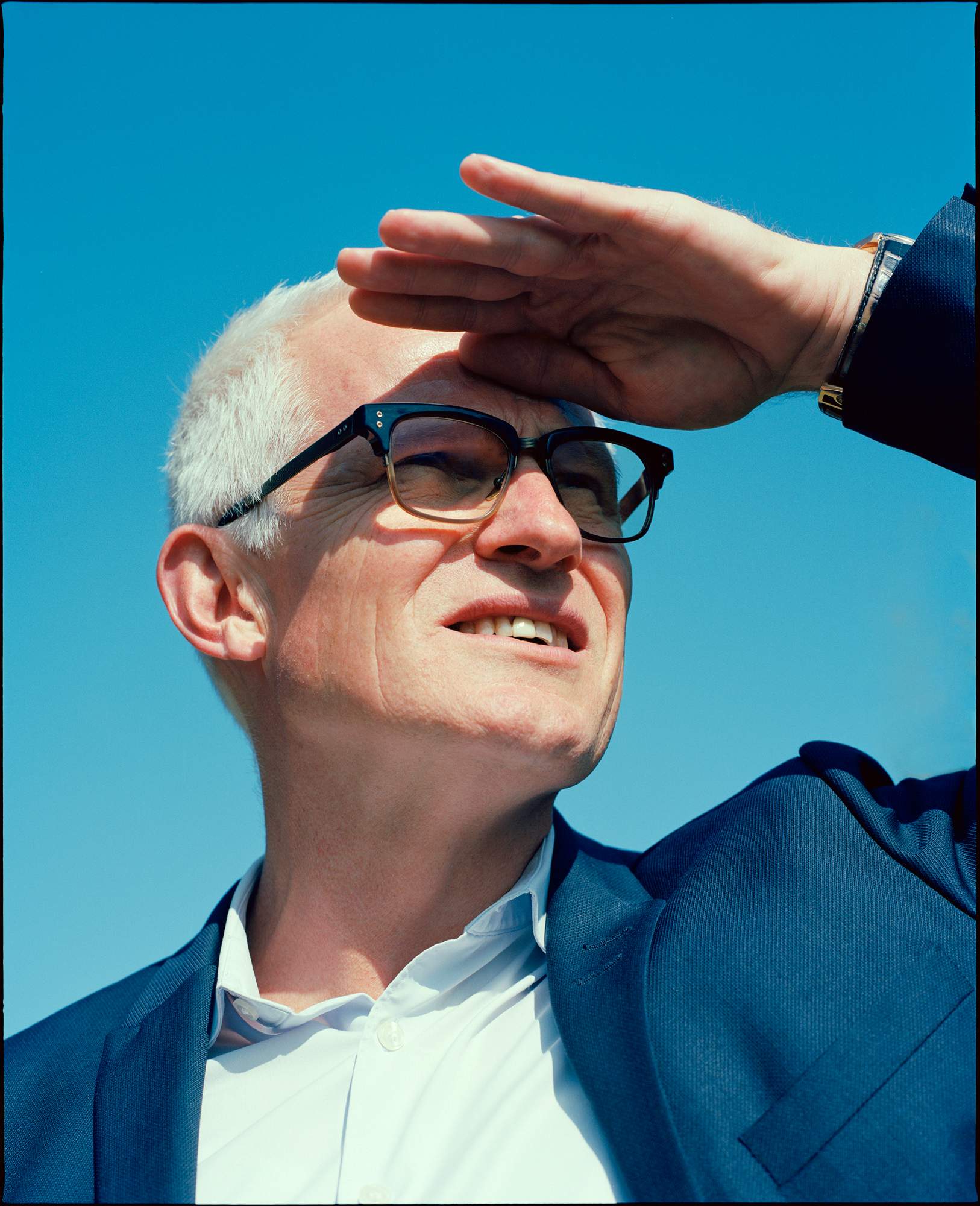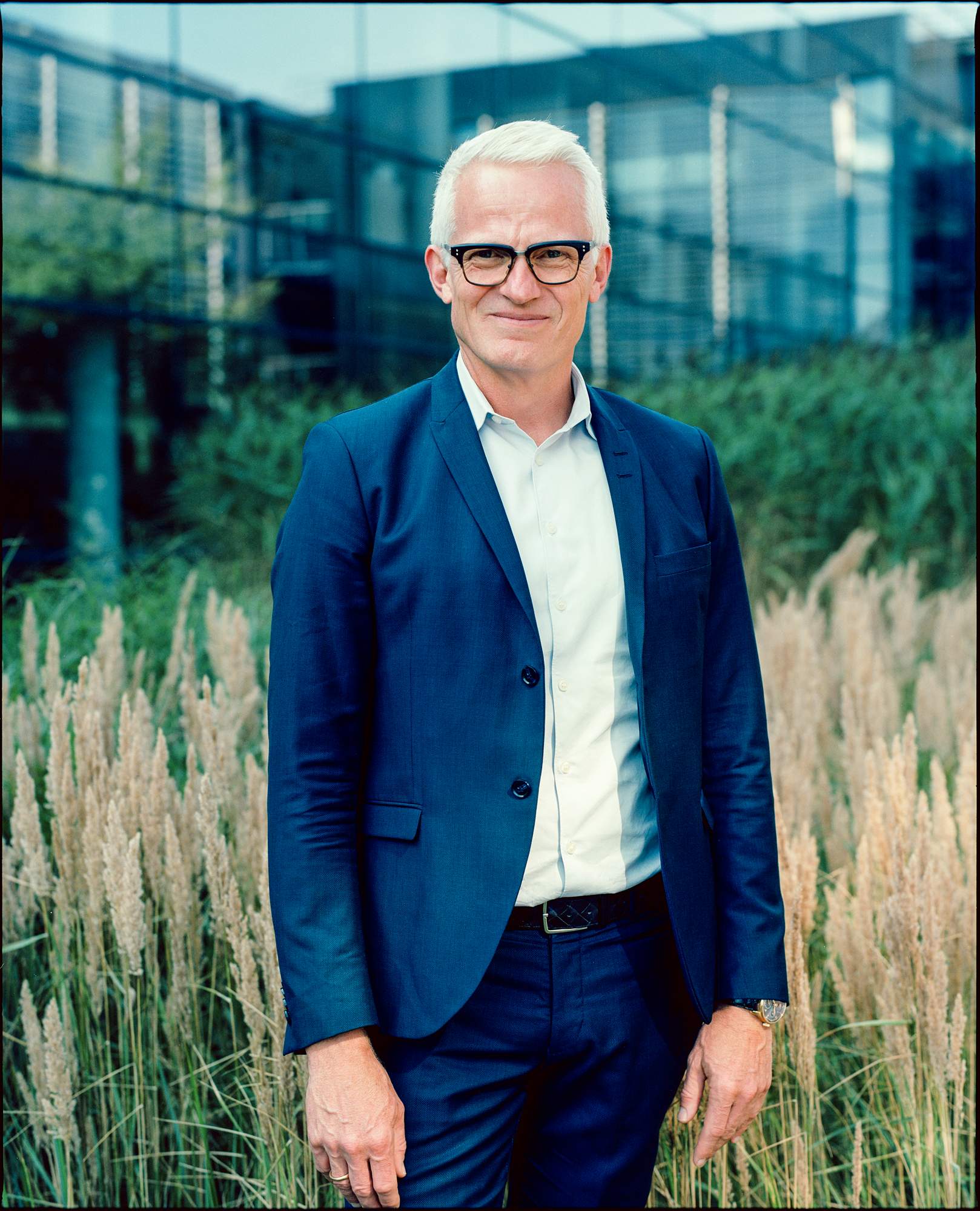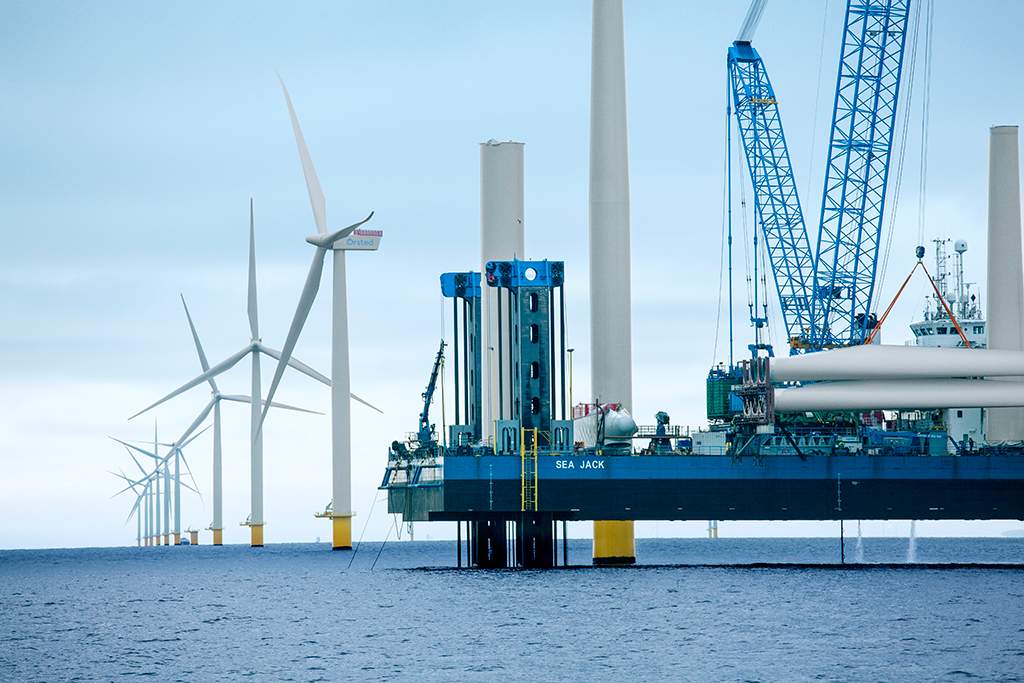Business: Mads Nipper / Copenhagen
Generating change
Denmark’s impressive transition from oil to renewable energy has been led by offshore-wind giant Ørsted. Its CEO tells us about the firm’s ongoing quest for power.
You might not think of Denmark as an oil state in the mould of Qatar or Venezuela. But the Scandinavian nation we know and admire today – with its free education and healthcare, and enviable work-life balance – was to a large extent financed by the oil and gas extracted from the North Sea by Maersk and managed by Dansk Olie og Naturgas (known by the unfortunate acronym Dong) during the 1970s and 1980s.
Today, Denmark enjoys a global reputation as an environmental frontrunner, aiming to achieve carbon neutrality by 2050. It’s also home to the world’s leading offshore wind-power company, Ørsted. But Dong and Ørsted are actually one and the same – an indication of just how much Denmark’s energy policies have changed over the past 30 years. The name switch happened in 2017, inspired by Hans Christian Ørsted, a Danish scientist who first discovered the connection between electricity and magnetism. It marked a transformation as one of Europe’s most carbon- intensive energy firms became one of the greenest. This year it came second in business magazine Corporate Knights’ global sustainable companies list.

Mads Nipper
When monocle catches up with Ørsted’s ceo, Mads Nipper, he’s in the firm’s vast, glassy Copenhagen office in the suburb of Gentofte, which he has worked from since taking the helm in January 2021. His predecessor, Henrik Poulsen, oversaw a 10-year metamorphosis of the utility business. “What’s been most impressive is the pace that this company moves at,” says Nipper. “It has been quite mind-blowing how fast we are passing strategic milestones. We announced that we wanted to secure three gigawatts of offshore capacity in a year – and we did it in six months. We’re entering into offshore floating wind farms and we’ve commissioned our first combined solar and storage project. So many things are happening.”
Nipper, who previously worked at Lego and water-pump company Grundfos, admits that when he took up his current position, he had to ask one of his 6,600 new colleagues to explain the basics of electromagnetism. “But that gives you an incredible humility as a ceo,” he says.
Ørsted is in the unusual position of being a listed company that is 50.1 per cent state-owned. But might that be the worst of both worlds, ensuring both political meddling and stakeholder pressure? “Being state-owned gives us a full credit rating – and the cheaper capital that brings is important,” says Nipper. “The Danish state is actually very good at letting us run on market terms. It thinks very long-term. I see it is an obligation to get people to see that there is no trade-off between sustainability and commercial enterprise.” However, Ørsted is likely to face tougher competition in the future. Under pressure to go green, oil giants such as Total, Shell and BP are now competing for tenders to develop the seabeds in numerous territories for their own offshore wind farms. Industry insiders believe that Ørsted will struggle to match Big Oil’s bottomless wallets as seabed options are already being awarded at what are widely considered to be inflated prices.
“We still want to be the undisputed leader in offshore,” says a bullish Nipper. “And our target of 50 gigawatts by 2030 is already fully funded.” He points out that

Ørsted’s CEO is tasked with defining the firm’s approach to sustainability
Ørsted’s share of the market might fall in the coming years but the market itself is predicted to grow seven times by the turn of the decade, which means that the company can continue to grow in absolute terms. He cites recent moves by the business into Japan, Taiwan, South Korea and Vietnam, as well as continuing growth in the US as positive signs for future global expansion. In terms of technology, Ørsted is betting on floating wind farms as the next major offshore development: turbines are still growing in scale and output, while the transmission and storage of the energy they generate are becoming more effective.
But some factors are beyond even a ceo’s control. Since Nipper took charge, Ørsted has been buffeted (or rather, not buffeted) by unusually low winds in the first half of 2021, resulting in DKK1.7bn (€229m) of lost revenue. Combined with warranty claims on malfunctioning offshore cables, it resulted in the company’s share price dropping by about a quarter over the past year. But that might not be such a troubling indicator. “Market sentiment has overpriced a lot of green shares, including Ørsted’s,” says Steen Vallentin, academic director of the Sustainability Centre at the Copenhagen Business School. “But life is definitely going to get more difficult, with the oil companies bidding for offshore tenders.”
The son of a shipbuilder, 56-year-old Nipper grew up in Skagen, the north Jutland town that’s popular with Copenhageners during the summer. In winter it’s a windswept place of fishermen known for straight-talking and driving a hard bargain – useful qualities for a ceo. Today, Nipper is one of a handful of Danish business leaders with a public profile. He’s a bit of a rockstar, according to those who follow the corporate world here. And yet he remains “a safe choice after the transformation under Poulsen,” according to Vallentin. Indeed, Nipper fits the image of a conservative Danish corporate leader, which will no doubt help as he continues to try to persuade his fellow countrymen and women to renounce their carbon-emitting habits.

There is tough competition for offshore development

As wealthy consumers with a penchant for nice cars and foreign travel – not to mention a high-emitting agriculture sector – the Danes have, per capita, one of the world’s highest carbon footprints. The country remains one of the EU’s largest oil producers, although it has pledged to stop fossil-fuel extraction by 2050. Ørsted itself still generates a small proportion of energy (less than 10 per cent) by burning coal, which it will cease to do by 2023. But the day after monocle speaks to Nipper, the front page of Danish daily Politiken leads with allegations of suspect carbon-quota trading by the company. Might allegations of “greenwashing” be justified? “Overall, the company’s transition to wind power has been amazing,” says Claus Ekman, director of Green Transition Denmark, an ngo. “But there are other things in its portfolio that I am less happy about. It still has plants running on biomass, for instance, which we don’t believe is fully sustainable.”
“We’re entering into offshore floating wind farms and we’ve commissioned our first combined solar and storage project. So many things are happening”
Ørsted has pledged that all new projects will have a net-positive biodiversity impact by 2030. By then it will have installed 30gw in offshore capacity. To put that into context, it has currently installed 7.6gw, while Total is aiming for nearly 100gw/h during the same time frame.
“As a nation we consume too much,” says Nipper. “So we have an obligation to decarbonise faster than others.” Danes seem willing to pay the price for this green transition: they bear the highest energy costs in the world, largely due to taxation. “We can afford it,” he says. “Especially if the tax revenue is spent wisely on accelerating things for the future.” It’s easy to pay your fuel bills when you are on a ceo’s salary, you might think, but Nipper’s is capped at dkk15m (€2m), plus performance-related bonuses of up to 30 per cent; Vallentin points out that he could potentially earn double that in the private sector. But Nipper sees his mission at Ørsted as long-term. “Put it this way, I do not plan to have another full-time job before I retire,” he says.
Ørsted in numbers:
Revenue (2020): DKK52.6bn (€7bn)
Operating profit (2020): DKK18bn (€2.4bn)
Market value: DKK369bn (€50bn)
Employees: 3,900 (Denmark); 6,600 (globally)
Total offshore wind turbines globally: 1,500 plus


